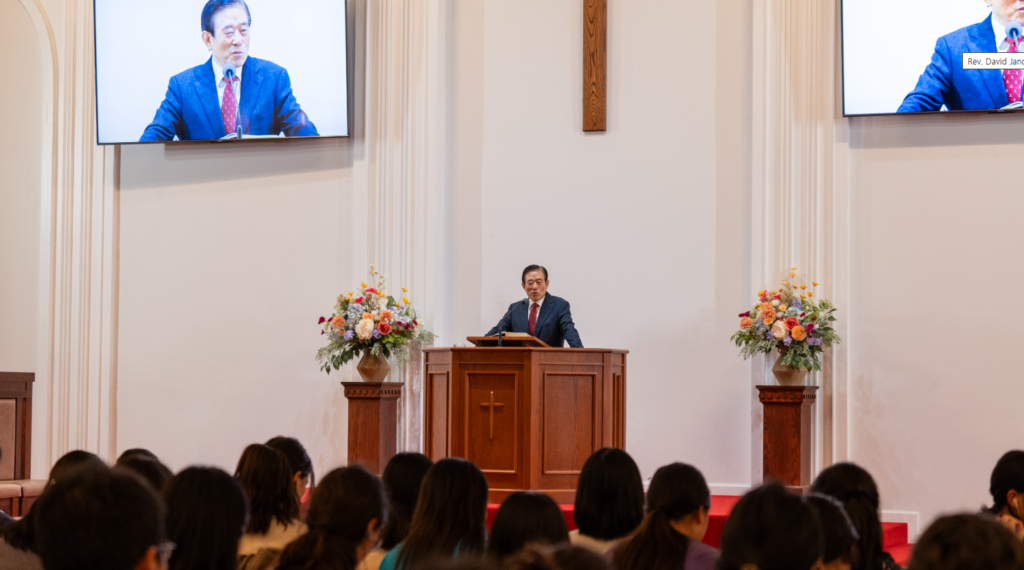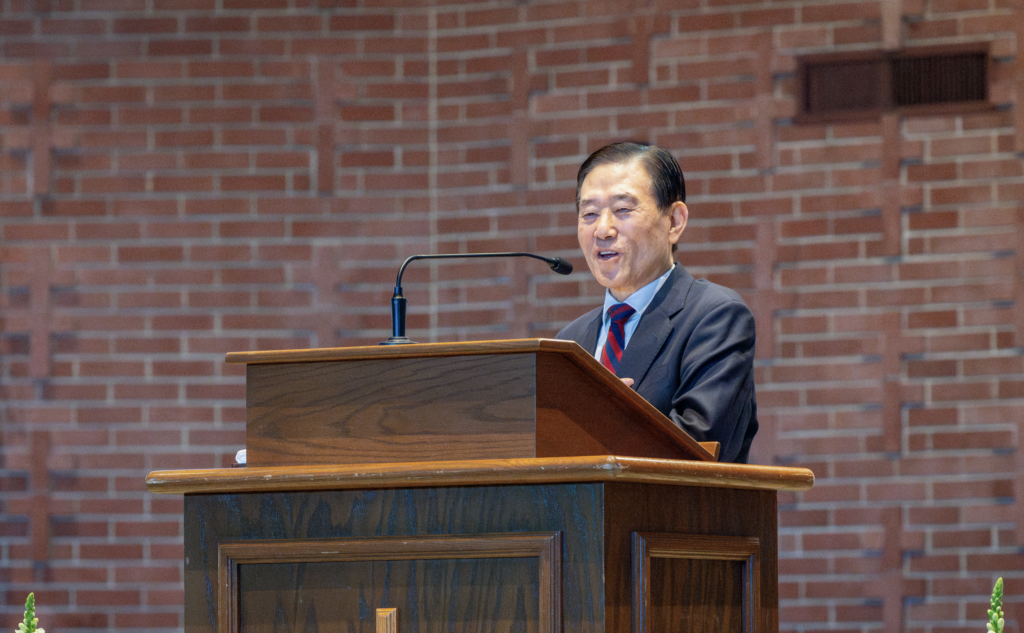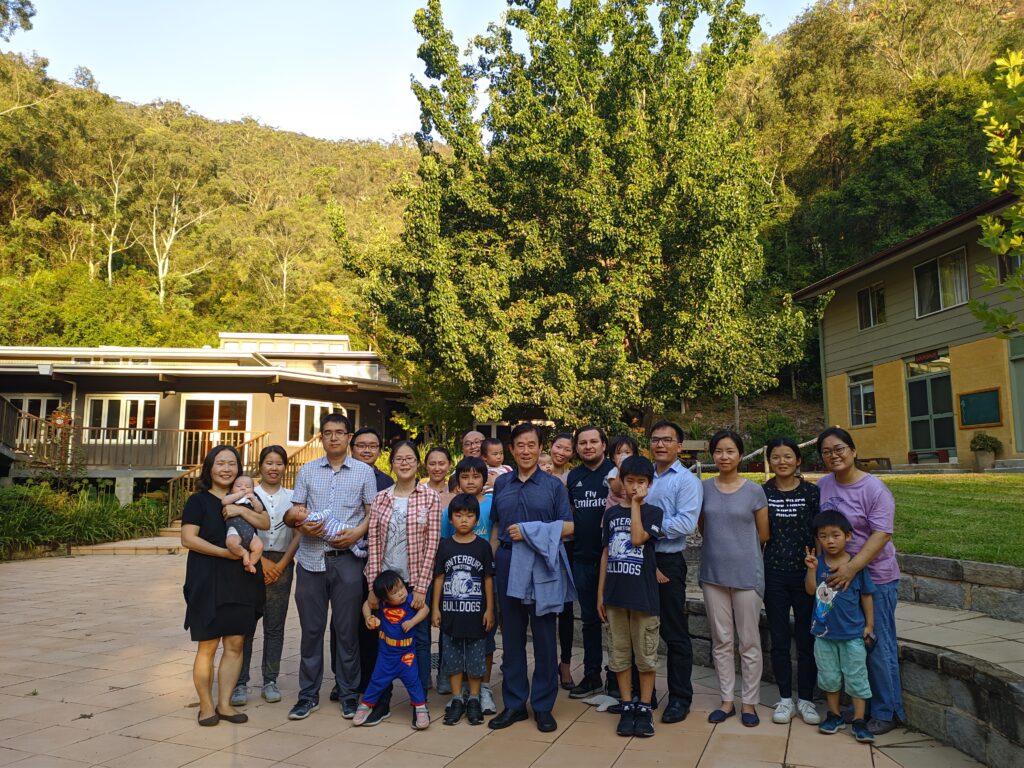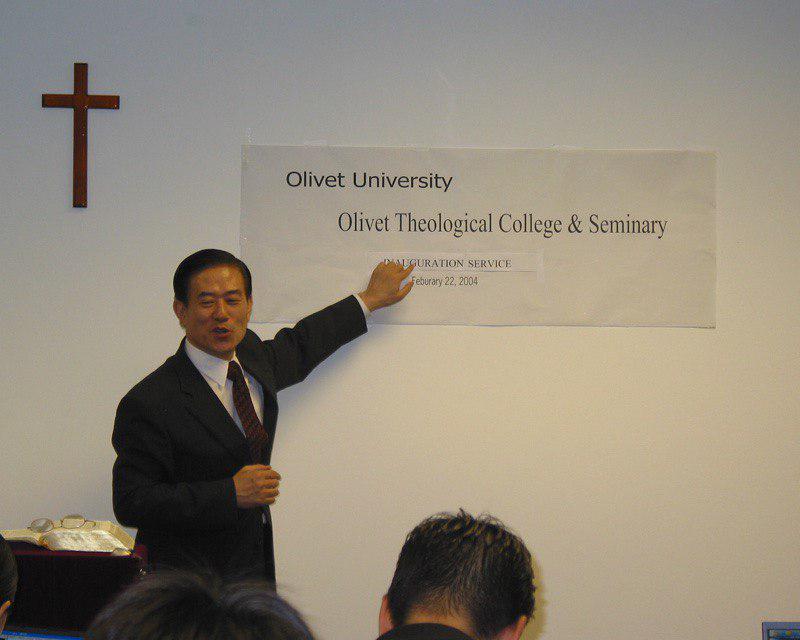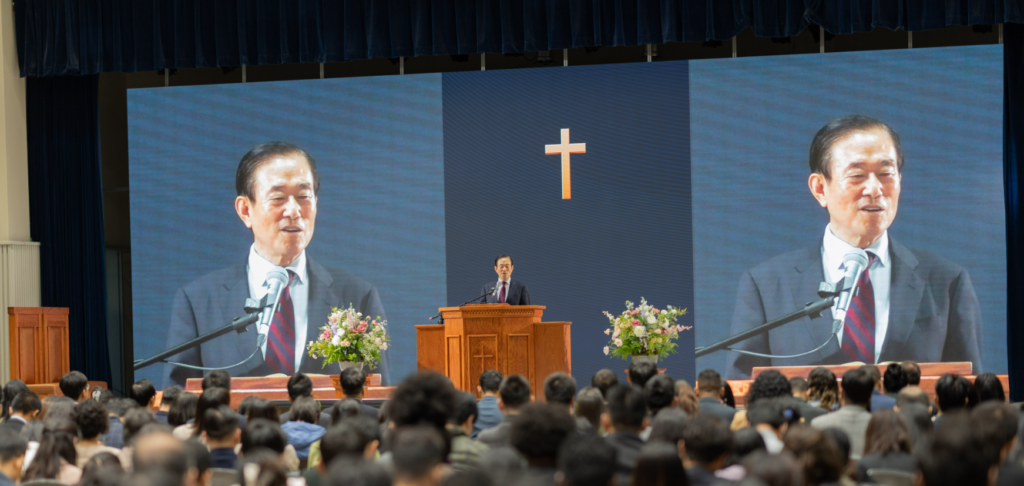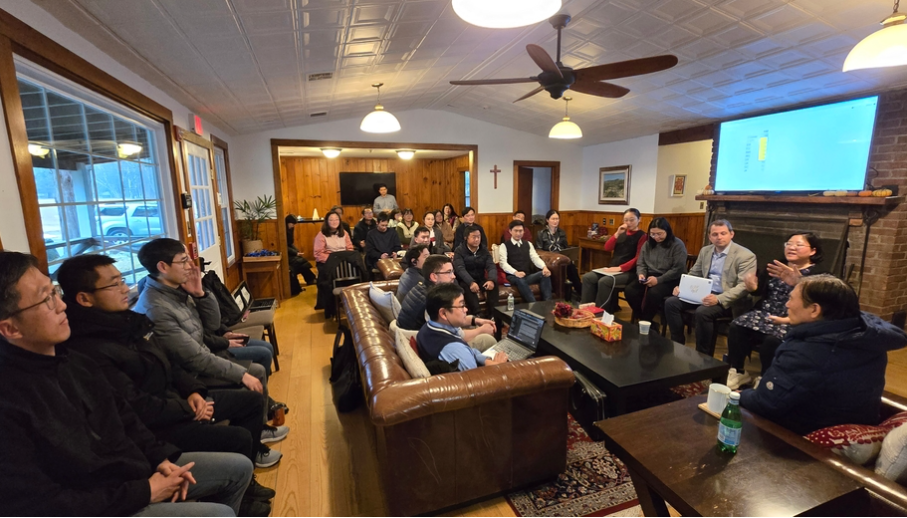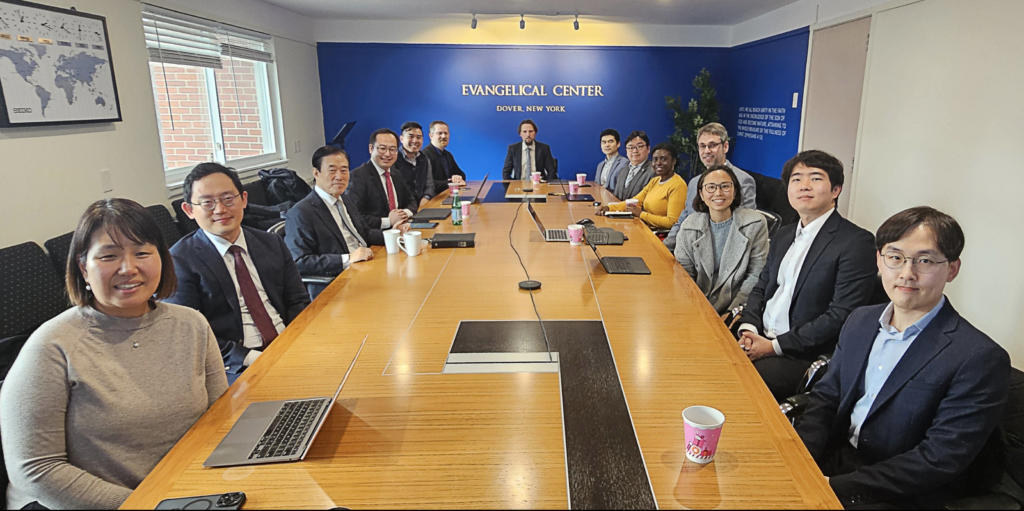
1. Le défi de « Détruisez ce temple » et l’esprit de la Croix
Parmi les nombreux actes que Jésus a accomplis durant son ministère public, l’un des plus marquants est l’épisode de la purification du Temple de Jérusalem. Dans l’Évangile de Jean (chapitre 2), Jésus monte à Jérusalem pour la Pâque, et, voyant dans le parvis du Temple des gens qui vendaient du bétail (bœufs, brebis, colombes) pour les sacrifices, ainsi que des changeurs d’argent, il les chasse et renverse leurs tables. Ce geste était une critique frontale de la corruption du pouvoir religieux de l’époque. En effet, les Juifs devaient se procurer un bœuf, un agneau ou une colombe pour leurs offrandes sacrificielles, et l’on trouvait également, dans l’enceinte du Temple, des changeurs qui profitaient de cette situation. Ceux-ci vendaient les animaux à prix exorbitant, et si quelqu’un apportait son propre animal de l’extérieur, on trouvait un défaut pour l’empêcher d’entrer. Ainsi, le clergé au pouvoir tirait profit de l’adoration due à Dieu, en contaminant le Temple avec l’argent et le pouvoir.
Cet événement dévoile au grand jour les abus de la famille du grand prêtre, en particulier la famille d’Anne (Annas). Celle-ci avait instauré une sorte d’hérédité du grand sacerdoce, était liée à l’Empire romain et consolidait ses intérêts personnels à travers le « commerce du Temple ». Tirant parti de la piété du peuple pour gagner argent et pouvoir, ces prêtres affermissaient encore leur influence religieuse et politique. Devant cela, Jésus déclare : « Ne faites pas de la maison de mon Père une maison de commerce » (Jn 2.16). Ses disciples se rappellent alors la prophétie de l’Ancien Testament : « Le zèle de ta maison me dévore » (cf. Ps 69.9). De ce fait, ils prennent conscience que le Messie ne tolérerait pas un système religieux corrompu.
Le pasteur David Jang met en évidence deux points essentiels dans cet épisode.
Premièrement, l’acte de Jésus ne vise pas uniquement le simple fait de vendre dans le Temple, mais dévoile le péché humain qui se cache derrière : la convoitise du pouvoir et de l’argent, capable de souiller le lieu d’adoration de Dieu. Le Temple de Jérusalem, centre du culte juif, était considéré comme un espace sacré et inviolable. Pourtant, Jésus constate que ce Temple est devenu un lieu d’injustice et de tromperie, où les pauvres se font exploiter, et où l’on détourne la volonté de Dieu. Face à cela, le Seigneur ne reste pas passif et s’oppose fermement à la profanation de la maison de son Père.
Deuxièmement, en déclarant « Détruisez ce temple, et en trois jours je le relèverai » (Jn 2.19), Jésus annonce clairement sa mort prochaine sur la croix et sa résurrection le troisième jour. Les Juifs ne le comprennent pas, rétorquant : « Il a fallu quarante-six ans pour bâtir ce temple, et toi, en trois jours, tu le relèverais ? » (Jn 2.20). Mais Jésus parlait du temple de son corps. Dès lors, ce n’est plus un bâtiment matériel qui constitue le centre de l’adoration et du salut, mais Jésus-Christ lui-même. Par la résurrection de son corps, il devient le fondement d’un « temple spirituel » renouvelé.
Cette annonce fut un énorme scandale pour les chefs religieux de l’époque. Dans le judaïsme, le Temple de Jérusalem était le symbole par excellence de la vie de foi et de l’observance de la Loi, considéré comme le centre de l’univers. Déclarer que l’on allait détruire ce Temple, ou suggérer qu’il existait une autorité plus grande que le Temple, relevait d’une grave offense sacrée. Anne, Caïphe et les autres membres de la caste sacerdotale ressentent donc les paroles et les actes de Jésus comme une menace extrême à leur pouvoir. Lors de l’arrestation de Jésus et sur le chemin de la croix, cette annonce de la destruction du Temple est l’une des accusations majeures retenues contre lui.
À partir de là, David Jang nous interpelle : nous avons, en nous-mêmes, un « temple » que nous devons détruire. Chaque être humain est pétri d’égocentrisme et s’enferme dans son propre « sanctuaire » intérieur pour préserver ses intérêts, son orgueil, son image. Or, le message de l’Évangile, et particulièrement celui de la croix, nous dit inévitablement : « Démolis ce faux temple qui est en toi. » Car tant que l’on ne brise pas l’ego, cette zone que l’on protège jalousement, on ne peut accueillir véritablement la vie nouvelle, et l’on reste esclave du péché à la racine de tous conflits et de toutes discords.
Dans l’Évangile de Jean (chapitre 18), on voit précisément comment Jésus est arrêté et conduit devant Anne, ce qui illustre l’aboutissement du conflit entre Jésus et la caste sacerdotale, amorcé lors de la purification du Temple. « Le grand prêtre interrogea Jésus sur ses disciples et sur son enseignement » (Jn 18.19). On devine leur volonté de l’inculper à tout prix. Anne l’interroge en premier parce que Jésus représente une menace directe contre leur système de pouvoir et contre le « commerce du Temple ». Pour eux, lorsque Jésus dit « Détruisez ce temple » et se proclame le véritable Temple, il s’en prend de front à leur autorité.
En définitive, le complot dans la nuit, le procès non public et la mise en croix de Jésus montrent jusqu’où la fausse religion et le pouvoir corrompu peuvent aller pour rejeter la vérité. Ils ne supportent pas de perdre leur position de force fondée sur le « temple visible » et sur toutes ses retombées économiques et politiques. À maintes reprises, les Évangiles soulignent que la source de tous les conflits entre Jésus et les dirigeants religieux tient à l’incompatibilité entre le message de Jésus et la convoitise de ces leaders.
David Jang met en garde : le même phénomène peut se produire au sein de l’Église ou dans la vie spirituelle de chacun. Si l’Église s’égare et recherche le pouvoir et la richesse au lieu de remplir sa vocation spirituelle, elle devient semblable à ceux qui faisaient du Temple un lieu de commerce. De même, chacun peut aller à l’Église mais, au fond de son cœur, résister à l’Évangile pour conserver son « petit temple intérieur ». Pourtant, la parole « Détruisez ce temple » doit résonner avec force pour tout croyant, l’invitant à démolir tout ego et tout espace sacro-saint que l’on érige pour soi-même. C’est seulement quand ces temples égoïstes sont détruits qu’apparaît le « temple de la résurrection ».
C’est ici que s’illumine l’esprit de la croix : Jésus a déclaré qu’il offrait sa vie pour la reprendre ensuite (cf. Jn 10.17). Il a bel et bien laissé son corps être « détruit » pour, trois jours plus tard, ressusciter dans une vie nouvelle. Et il n’a pas fait que le dire : il l’a accompli concrètement en empruntant la route du Calvaire. La mort et la résurrection du Christ constituent le cœur de la foi chrétienne, mais ces événements sont intimement liés à ce symbole de « destruction et de relèvement du Temple » dont Jésus parle. Ainsi, la phrase « Détruisez ce temple » ne désigne pas une violence gratuite ni une négation pure et simple, mais signale la mort d’une réalité ancienne pour l’avènement d’une réalité nouvelle, c’est-à-dire l’essence même de l’Évangile.
Nous retrouvons un cas analogue dans Jean 8, lorsque Jésus est confronté à la femme surprise en flagrant délit d’adultère. La Loi de Moïse imposait la lapidation, mais Jésus la pardonne finalement en déclarant : « Que celui de vous qui est sans péché jette le premier la pierre » (Jn 8.7). Ce geste proclame la miséricorde et le pardon de Dieu, supérieurs à la Loi. Aux yeux des chefs religieux, cela peut passer pour une dangereuse « transgression » de la Loi. De même, à la suite de Jésus, Étienne sera lapidé pour avoir été accusé de vouloir détruire le Temple et de réformer la Loi de Moïse (Ac 6.13-14).
Ainsi, le message « Détruisez ce temple » signifie qu’il faut sortir d’une religion attachée aux formes extérieures, à la Loi, et entrer dans la relation directe avec Dieu, avec au centre le renoncement à soi, la consécration, et le pardon infini pour les pécheurs. Selon David Jang, « renverser le temple égoïste en nous pour y ériger l’esprit de la Croix du Seigneur » est l’unique chemin vers la véritable Église et l’action authentique du Saint-Esprit. C’est aussi la voie que l’Évangile de Jean, et plus largement tous les Évangiles, reconnaissent comme l’œuvre essentielle de Jésus-Christ : réconcilier et sauver.
Revenons à Jean 2 : en proclamant sa résurrection future — « En trois jours je le relèverai » —, Jésus annonçait déjà le monde qui suivrait sa victoire sur la mort. Les disciples ne comprirent la portée de ces mots qu’après avoir fait l’expérience de la résurrection (Jn 2.22). Sans la mort de Jésus, il n’y aurait pas de résurrection. Sans la démolition de l’ancien, le nouveau ne peut voir le jour. Telle est la vérité fondamentale de l’Évangile, condensée dans l’idée de « détruire le Temple ». Ce principe demeure valable pour l’Église et pour tous les croyants aujourd’hui : il faut renoncer à ce qu’on tient pour « centre de l’univers » et se laisser interpeller par la Parole.
David Jang souligne que la foi chrétienne ne reste pas dans une « zone de confort », mais qu’elle nous défie sans cesse, qu’elle nous bouscule et nous engage à combattre la « religiosité mensongère ». « Détruisez ce temple » n’est pas un slogan théologique creux ; il appelle chacun à démolir ses murailles intérieures, son regard de jugement, sa soif de gloire personnelle, et tout cela pour se mettre au service du Seigneur. Ne pas répondre à cet appel, c’est risquer de marcher sur les traces des chefs religieux du temps de Jésus, qui se complaisaient dans l’hypocrisie et l’injustice. Au contraire, si l’on y consent, en s’humiliant et en mourant à soi-même, on peut alors partager la gloire de la Croix et de la Résurrection, nous enseigne David Jang.
Lorsque l’on observe de près les tensions entourant la crucifixion, on voit que la venue de Jésus a un caractère révolutionnaire : il détruit la structure viciée d’un légalisme dépassé. Le commandement « Détruisez ce temple » est au cœur de cette révolution, et il s’éclaire grâce à l’esprit de sacrifice de la Croix. Selon David Jang, la maturité spirituelle d’un croyant se manifeste lorsque celui-ci passe par ce processus de « destruction et de reconstruction » du Temple. L’observance littérale de la Loi, la participation aux rites ecclésiaux, ne suffisent pas : il faut faire l’expérience d’une transformation radicale, d’un arrachement à l’ancien moi pour s’unir à Christ, seul moyen d’édifier le « véritable temple spirituel ».
Sans l’esprit de la Croix, l’Église risque fort de dégénérer en un lieu d’échanges financiers et de jeux de pouvoir, à l’image du Temple de Jérusalem. De même qu’il fut nécessaire de purifier ce Temple, l’Église d’aujourd’hui a besoin d’une purification permanente. C’est pour cela que la parole de Jésus « Détruisez ce temple » résonne encore. Fermer les yeux sur ce qui doit être démoli n’est pas conforme à l’Évangile. Au contraire, il faut être capable d’un regard critique sur nous-mêmes, prêts à rejeter tout ce qui est corrompu ou dénaturé. Alors seulement la présence de l’Esprit peut se déployer et la « maison de Dieu » (le temple du Seigneur) commencer à se manifester de manière concrète.
En conclusion, David Jang explique que le sens profond de « Détruisez ce temple » consiste à « mourir pour que le Seigneur vive », et à accéder à « la liberté de l’Évangile qui dépasse l’ancienne structure légaliste ». Quiconque accepte pleinement ce message renonce spontanément à lui-même et sert l’Église et les autres. Là où l’esprit de la Croix se traduit en actes, il n’y a plus de murs, de conflits ni de discriminations. Voilà la voie sacrée, le chemin ouvert par Jésus : la « destruction et la reconstruction du Temple », qui nous invite tous à emprunter la voie de la Croix.
Sous-thème 2 : La voie de la paix, l’ère de l’Esprit et l’essence de la véritable Église
Le commandement « Détruisez ce temple » n’est pas un simple appel à la destruction matérielle de l’ancien judaïsme. Il s’agit d’une proclamation spirituelle qui inaugure une « ère nouvelle », et cela coïncide avec ce que nous lisons dans le livre des Actes des Apôtres. Après la mort et la résurrection de Jésus, les disciples expérimentent, lors de la Pentecôte, la puissance et l’universalité de l’Évangile. Dans Actes 2, cent vingt disciples sont réunis, lorsque l’Esprit Saint descend sur eux et leur fait proclamer la gloire de Dieu en diverses langues. Cet événement montre que ce ne sont plus seulement quelques chefs ou une élite religieuse qui ont accès à la présence divine, mais que l’Esprit est répandu sur tous.
Selon David Jang, on comprend ici l’intention profonde de Jésus qui a « détruit le Temple ». Autrefois, le Temple de Jérusalem était le point de référence absolu de la foi juive. À présent, le Christ ressuscité devient en personne l’objet de notre culte, et l’Esprit Saint, qui descend par lui, est le nouveau lieu d’adoration. Plus encore, les apôtres affirment : « Vous êtes le temple » (1 Co 3.16 ; 6.19), soulignant que désormais, la communauté des croyants est l’endroit où l’Esprit de Dieu réside, chaque chrétien étant un « temple vivant » uni aux autres en un seul corps.
Pour que ce « nouveau Temple » voie le jour, l’« ancien Temple » devait nécessairement être détruit. Lors de la crucifixion, le voile du Temple se déchire de haut en bas (Mt 27.51), symbolisant que l’ancien sanctuaire et ses rites n’étaient plus le seul médiateur entre Dieu et les hommes. Désormais, n’importe qui peut s’approcher librement de Dieu par le Christ, sans être contraint par la figure du grand prêtre ou par des cérémonies spécifiques. C’est un tournant radical de l’histoire du salut, et en même temps, un coup fatal pour l’ancien pouvoir religieux. Autrement dit, « Détruisez ce temple » n’est pas l’appel à un mouvement extrémiste ou séditieux, mais l’annonce prophétique de l’avènement de l’ère de l’Esprit.
Dans l’Épître aux Éphésiens, Paul écrit que Jésus « a renversé le mur de séparation, l’inimitié, dans sa chair » (cf. Ep 2.14). Il fait disparaître la division entre Juifs et païens, créant un être nouveau en Christ. À l’époque, les Juifs avaient un espace réservé aux Gentils dans le parvis du Temple, et toute personne étrangère qui franchissait illégalement la barrière risquait la peine de mort. Désormais, en Christ, tous ces murs sont abattus, et nous devenons « un seul homme nouveau » (Ep 2.15), membres de la même famille de Dieu (Ep 2.19).
David Jang applique ce même principe à la communauté de l’Église, en soulignant : « La véritable Église est un lieu où toute forme de discrimination est impossible. » Il ne s’agit pas seulement d’affirmer l’égalité en théorie, mais de rendre visible la réalité d’hommes et de femmes qui, ayant été anéantis dans leur « ancien moi » par la Croix et ressuscités avec Christ, vivent réellement cette unité. Si des murs persistent encore dans l’Église, c’est qu’on n’a pas encore pleinement détruit l’« ancien temple ». L’exhortation « Détruisez ce temple » invite donc chacun, comme communauté et individuellement, à repentir et à détruire toute forme de barrières, de haine ou de privilèges injustes.
Jésus illustre maintes fois l’accueil radical et la proximité avec les exclus. Il partage son repas avec les publicains, les pécheurs, les prostituées, et cela choque grandement les Juifs légalistes (cf. Mc 2.15-17). Tandis que les vendeurs du Temple exploitent les pauvres à l’occasion de la Pâque, Jésus, lui, inclut dans son enseignement ceux que la société méprise. L’Église doit donc incarner ce que Jésus a commencé, en devenant un « temple ouvert » qui rassemble tout le monde dans l’adoration.
Néanmoins, l’histoire de l’Église montre que, parfois, le clergé a fait alliance avec le pouvoir politique et s’est éloigné de l’esprit de l’Église primitive. Au moment de la Réforme, Luther, Zwingli ou Calvin ont tous crié : « Démolissons le temple corrompu et revenons à la pureté de l’Évangile », une démarche qu’on peut rapprocher du « Détruisez ce temple » de Jésus, dans un contexte historique différent. De la même manière, David Jang estime que, lorsque l’Église moderne traverse une crise, nous devons nous rappeler cette parole pour nous réexaminer et oser la réforme sous l’impulsion de l’Esprit.
Pour être fidèle à sa mission de « paix » et de « réconciliation » dans le monde, l’Église doit d’abord réaliser l’unité en son sein et se souvenir qu’elle est rachetée par le sang du Christ. Jésus se réfère à son corps comme au « Temple » promis à la destruction et à la reconstruction en trois jours, c’est-à-dire l’acte rédempteur de la Croix et de la Résurrection. Cet acte se conclut par l’effusion de l’Esprit Saint, grâce à laquelle tous se tiennent à égalité devant Dieu (Ac 2.17-18). La Pentecôte inaugure l’ère de l’Esprit, où ni l’âge, ni le sexe, ni l’ethnie ou la condition sociale ne justifient des barrières.
Si l’Église ne met pas en pratique cet héritage, et n’applique pas à elle-même le message de la « destruction et reconstruction du Temple », elle risque de suivre la voie d’Anne et de Caïphe. David Jang affirme que si les disputes de pouvoir ou les problèmes d’argent occupent le premier plan dans l’Église, c’est la preuve qu’un « temple mensonger » est en train de dominer. Dans un tel contexte, il n’y a plus de place pour l’Esprit Saint, et le monde ne perçoit de l’Église que son hypocrisie. C’est pourquoi le « Détruisez ce temple » nous concerne directement et exige la repentance et la réforme. C’est seulement lorsqu’une Église s’humilie et s’examine qu’elle peut recouvrer la confiance du monde et révéler la véritable lumière de l’Évangile.
Appliqué à la sphère personnelle, ce message se vérifie de la même manière. « Détruisez ce temple » n’est pas réservé à la communauté ecclésiale ; chaque croyant est appelé à l’introspection. À l’instar de Job, qui se repent « dans la poussière et la cendre » après avoir vu Dieu (Jb 42.6), nous sommes appelés à reconnaître devant le Seigneur notre orgueil et nos limites. Or, la plupart des hommes cherchent à préserver « leur propre temple » et la sécurité qu’il leur procure. David Jang souligne que l’abandon de ce temple ouvre la voie à la repentance véritable et à l’accueil de l’Esprit Saint, qui s’accomplit dans la vie crucifiée, marquée par « l’abnégation et le sacrifice » selon la Croix.
Lorsque Paul proclame : « J’ai été crucifié avec Christ » (Ga 2.20), c’est une manière radicale de dire que son « temple personnel » a été détruit. Lui qui était irréprochable selon la Loi (Ph 3.4-6), considère désormais tout cela comme une perte, comme des ordures, pour gagner Christ (Ph 3.7-8). C’est la mise en pratique concrète de la parole de Jésus « Détruisez ce temple », et la manifestation de la foi en la résurrection. La véritable Église, selon Paul, est cette assemblée de gens qui, à l’exemple de l’Apôtre, laissent derrière eux leurs anciens titres, mérites et fiertés pour se relever en Christ et devenir ce « nouveau Temple » vivant.
Notre société actuelle est pleine de divisions, de conflits, de violences. Mais beaucoup désirent aussi trouver une voie de « vivre ensemble ». L’Évangile propose un chemin spécifique : « Aimez vos ennemis, lavez-vous mutuellement les pieds, et renoncez à ce que vous possédez pour que l’autre ait la vie. » C’est l’amour radical de la Croix. Or, ce fondement qu’est la Croix suppose d’abord « Détruisez votre temple », c’est-à-dire quitter la position de force et se dessaisir de soi-même. David Jang insiste sur l’originalité du message chrétien : aucune philosophie ou idéologie n’est aussi radicale que l’idée d’un Dieu qui s’incarne, qui meurt pour offrir une vie nouvelle. Quiconque l’accepte vraiment voit sa vie transformée.
De même, le culte ne doit pas être un simple rituel, mais l’expression d’un peuple qui accepte de « détruire son temple intérieur ». L’adoration doit être un lieu de dépouillement devant le Seigneur, de service mutuel et d’accueil des pécheurs. Alors l’Esprit se manifeste au sein de la communauté, permettant de faire l’expérience concrète que « votre corps est le temple du Saint-Esprit » (1 Co 6.19). David Jang appelle l’Église, en Corée ou dans le monde, à redécouvrir cette réalité spirituelle. Malgré la rapide évolution des sociétés, la « puissance de l’humilité et du dépouillement » inhérente à l’Évangile demeure inchangée et s’avère plus nécessaire que jamais.
Dans le contexte missionnaire, les mêmes difficultés se posent. Abandonner son « temple », c’est renoncer à ce que l’on considérait comme la tradition la plus importante. Après la Pentecôte, l’Évangile s’est répandu au-delà des frontières de langue, de culture, de race et de statut social. Les convertis du monde entier ont dû, chacun à leur manière, vivre ce décentrement, quitter leurs faux appuis et expérimenter l’unité en Christ. Être chrétien signifie que les distinctions « qui est juif et qui est païen ? » n’ont plus lieu d’être, car l’Esprit Saint fait de nous un seul peuple. C’est là la portée universelle de la parole « Détruisez ce temple » telle que nous la présente l’Évangile de Jean.
Dans son ministère, David Jang rappelle fréquemment que « l’Église est le temple de Jésus » et qu’elle ne doit jamais céder à la séduction du pouvoir ni de l’argent. Comme le Temple d’autrefois, qui exploitait le peuple par l’impôt du Temple et la vente d’animaux, l’Église moderne peut aussi se laisser prendre par l’appât du gain ou par la domination ecclésiastique. Un tel scénario montre à quel point l’admonition « Détruisez ce temple » est d’actualité. Si l’Église y obéit et pratique la repentance, alors le monde regagnera confiance, et la vérité de l’Évangile se révélera avec éclat.
Pour toutes ces raisons, on ne peut réduire « Détruisez ce temple » à un simple épisode du passé. De fait, ces paroles de Jésus ont, tout au long de deux mille ans d’histoire chrétienne, provoqué de multiples réformes et réveils. D’un point de vue individuel, plus on avance dans la foi, plus on doit se dépouiller de soi-même et livrer au Seigneur ce « temple de désirs » qu’on voudrait préserver. C’est ce chemin qui conduit à la vraie liberté, à la vraie joie, et à la communion fraternelle.
L’arrestation de Jésus dans Jean 18, où on le somme de révéler son « crime », montre à quel point son message dérangeait les pontifes. Il ne s’agissait pas d’une simple question doctrinale, mais bien d’une atteinte directe à la base même de leur puissance : « Détruisez ce temple » ébranlait l’autorité de la prêtrise. Mais Jésus ne recule pas. Il va jusqu’à subir la crucifixion, donnant son propre corps en sacrifice, accomplissant jusqu’au bout ce qu’il avait annoncé. Trois jours plus tard, sa résurrection inaugure l’« ère du nouveau Temple », que personne n’aurait pu imaginer.
David Jang conclut que cette victoire pascale nous enseigne clairement : nous aussi, nous devons « détruire notre temple » pour recevoir la vie de la Résurrection. C’est seulement en nous reniant nous-mêmes et en crucifiant notre vieil homme que la joie de Pâques peut devenir réelle. Les disputes, les dissensions, que ce soit dans l’Église, la famille ou la société, proviennent d’une même source : l’incapacité à renoncer à notre « temple intérieur ». Or Jésus nous convie sur la « voie de la paix » (Ep 2.14), abattant de son corps les murs entre nous. Après la parole de défi « Détruisez ce temple », vient la promesse « Je le relèverai », qui nous ouvre un nouvel horizon de salut. Loin de nous conduire à la ruine, cette parole nous oriente vers une vie plus abondante, selon le plan de Dieu.
De prime abord, ce message fut incompris de ceux qui voulaient lapider Jésus, et qui considéraient le Temple comme la réalité intangible du judaïsme. Mais, après la Pentecôte, les disciples ont annoncé cette Bonne Nouvelle avec courage, et même la mort d’Étienne, victime du même motif d’accusation, a servi de semence au progrès de l’Évangile. La proclamation « Détruisez ce temple » peut susciter l’opposition et la persécution de la part des puissants ou du monde, mais, à l’issue de ce chemin, nous trouvons la Résurrection. Si l’Église se souvient de cela, elle pourra préserver son essence et traverser toute tempête.
En résumé, « Détruisez ce temple » exprime le cœur de la foi en la Croix : l’amour et la paix, le salut et le sacrifice y convergent. Jésus nous a dit : « Si je perds ma vie, c’est pour la reprendre, pour que jaillisse la nouveauté. » Et il l’a démontré par son propre sang. Nous, qui suivons cette route, confessons avec le psalmiste : « Le zèle de ta maison me dévore » (Ps 69.9), mais en sachant que la « maison du Seigneur » n’est pas un bâtiment ni une structure institutionnelle : « Vous êtes le temple de Dieu ». Ce temple intérieur se construit par la puissance de la Croix et la présence du Saint-Esprit, et donne naissance à une communauté où toute discrimination ou séparation est abolie.
David Jang appelle cela « la révolution de l’Évangile ». On ne peut conserver l’ancien tout en adoptant la nouveauté ; il faut d’abord détruire pour rebâtir. C’est ainsi que Jésus accorde son pardon aux pécheurs et, en s’abaissant lui-même, nous invite à entrer sur la « voie de la paix ». En fin de compte, c’est ce chemin qu’emprunte toute personne ou toute communauté qui désire devenir réellement « Église » sous la conduite de l’Esprit. Cette route est celle qui mène au « Royaume de Dieu », ouverte par la Croix. C’est une porte étroite, mais c’est là que réside la vraie vie.
www.davidjang.org
